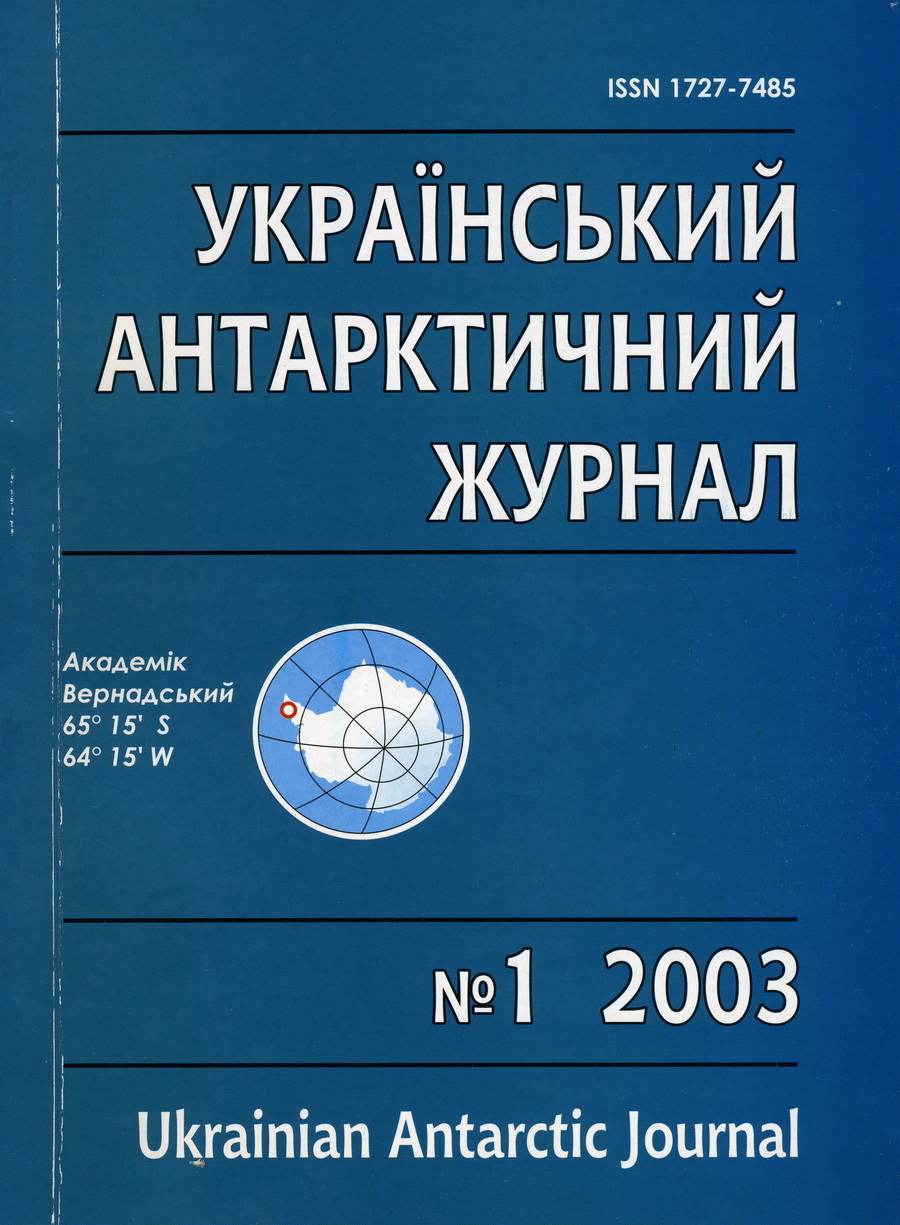Анотація
Наводиться методика вимірювань і результати досліджень радіосигналів короткохвильових мовних станцій, що відбилися від йоносфери й розсіялися схвильованою поверхнею моря; експерименти виконані в рамках 7-ої Української антарктичної експедиції на борту науково-дослідницького судна “Горизонт”. Теоретично досліджується спектр електромагнітних хвиль, розсіяних морською поверхнею, розглядається випадок лінійної всенаправленої антени, розміщеної біля освітленої спадним полем морської поверхні, враховується кінцева провідність морської води, ковзке розповсюдження розсіяних хвиль. Співставлено експериментальні спектри розсіяння з модельним, показано якісний збіг теорії та експеримента. Розглянуті можливі фізичні причини, що пояснюють особливості спектральної структури сигналів. Зроблений висновок про можливість проведення океанографічних досліджень з використанням випромінювання мовних станцій.
Посилання
- Bass, F.G., & Fuks, I.M. (1972). Rasseianie voln na statististicheski nerovnoi poverhnosti [Diffraction of waves on statistically uneven surface]. Moscow, Nauka. [In Russian]
- Galushko, V.G. (1984). Opredelenie velichiny gorizontal'nyh gradientov v ionosfere po izmereniam parametrov KV v okrestnostiah miortvoi zony [Determination of the horizontal gradients in the ionosphere by measuring SW parameters near the dead zone]. Izv. Vuzov. Radiofizika, 27(12), 1491-1496. [In Russian]
- Kascheev, S.B., Yampolski, Y.M., & Zalizovskii, A.V. (2000). Duhpozitsionnoie zondirovanie morsckoi povershnosti signalami korotkovolnovyh radioveschatel'nyh stantsii [Two-positional sounding of the sea surface by signals of teh showrtwave radiostations]. Radiofizika i radioastronomia, 6(1), 79-88. [In Russian]
- Monin, A.S., & Krasitskii, V.P. (1985). Iavlenia na poverhnosti okeana [The phenomena on the ocean surface]. Leningrad, Gidrometeoizdat. [In Russian]
- Fillips, O.M. (1980). Dinamika verhnego sloia okeana [The Dynamics of the upper ocean layer]. Moscow, Gidrometeoizdat. [In Russian]
- Beley, V.S., Galushko, V.G., & Yampolski, Y.M. (1995). Traveling ionosphere disturbances diagnostics using HF signal trajectory parameter variations. Radio Sci, 30(6), 1739-1752.
- Pierson, W.I., & Moskovitz, L. A proposed spectral form for fully developed wind seas based on the similarity method of S.A. Kitaigorodsii. J. Geophysics Res., 69(24), 5181-5190.
- Wu, J. (1969). Wind stress and surface roughness at air-sea interface. J. Geophys. Res., 74(2), 444-455.

